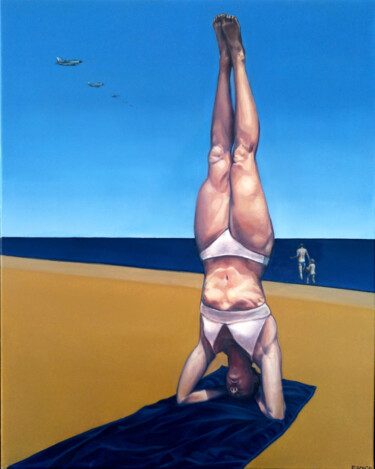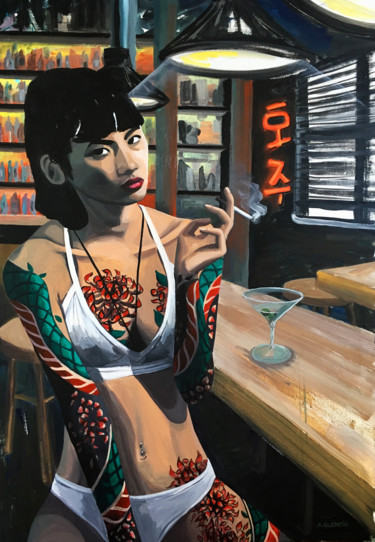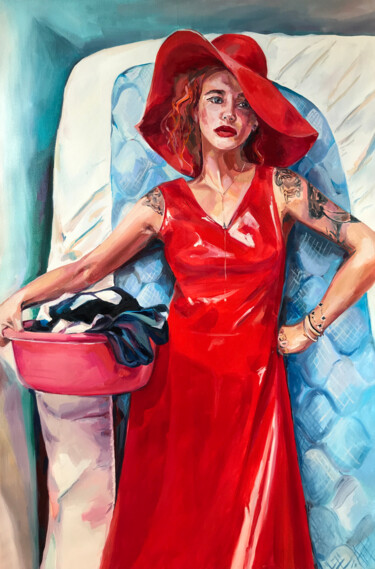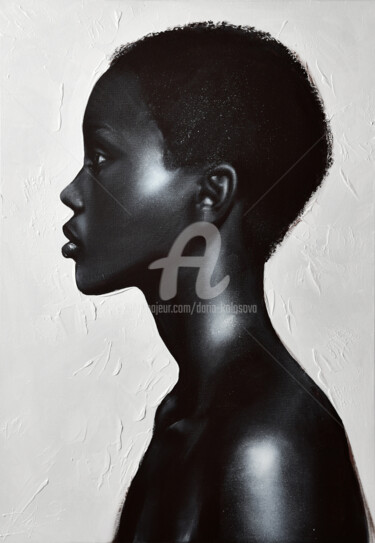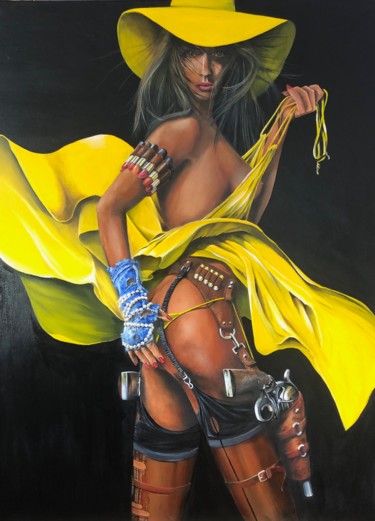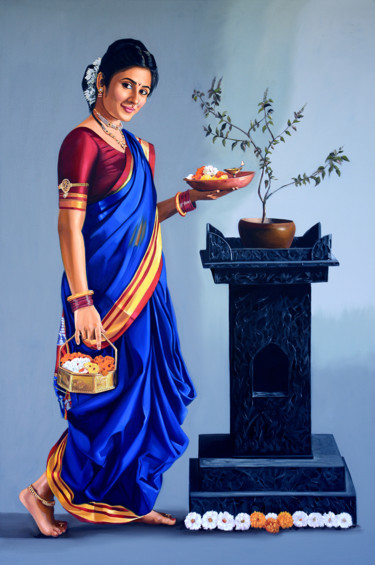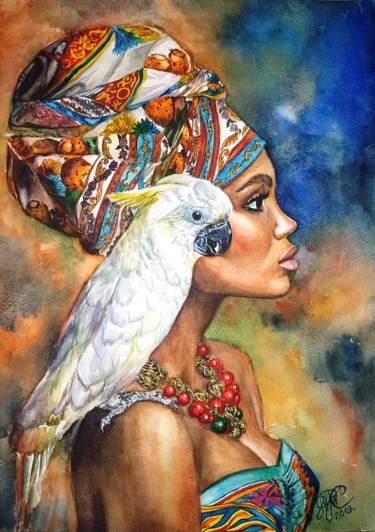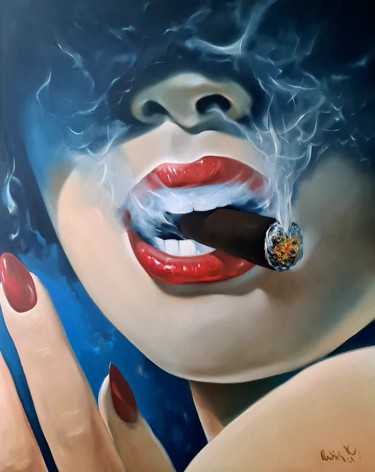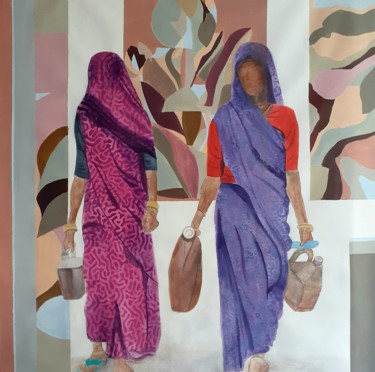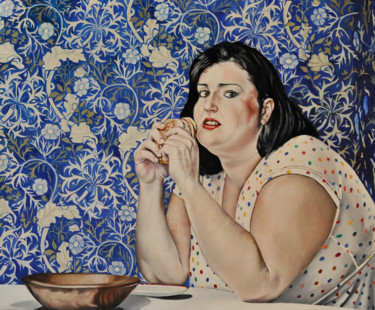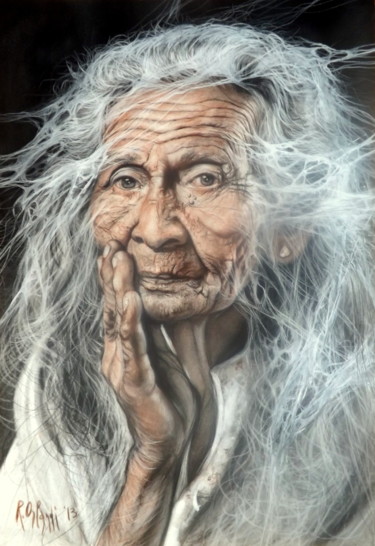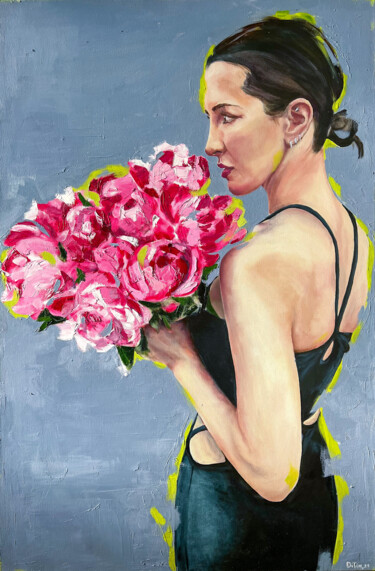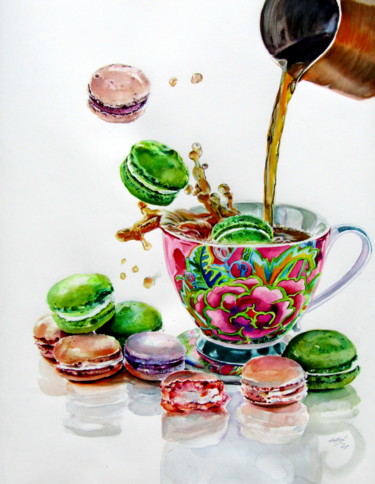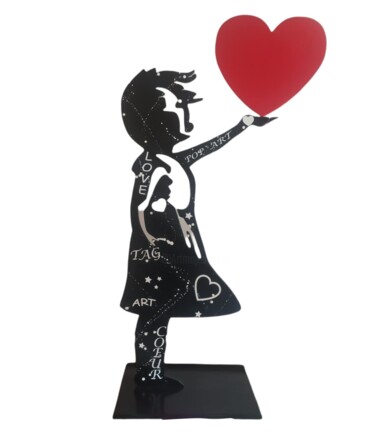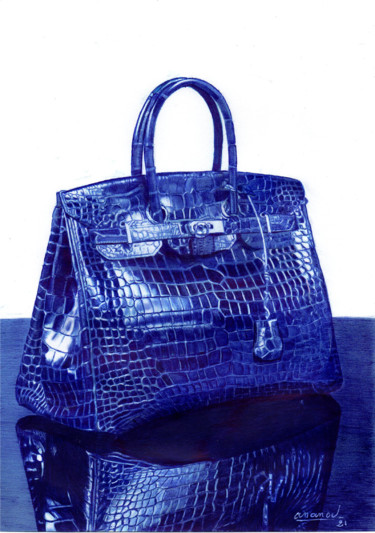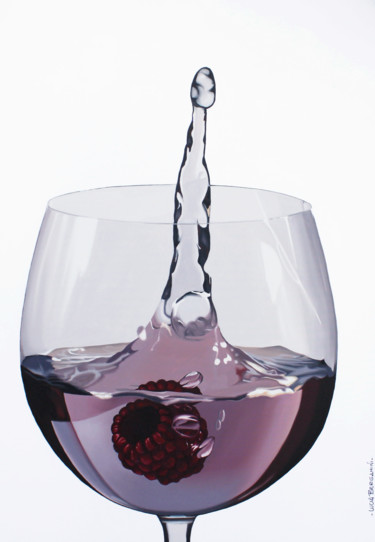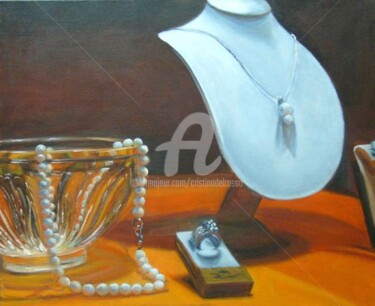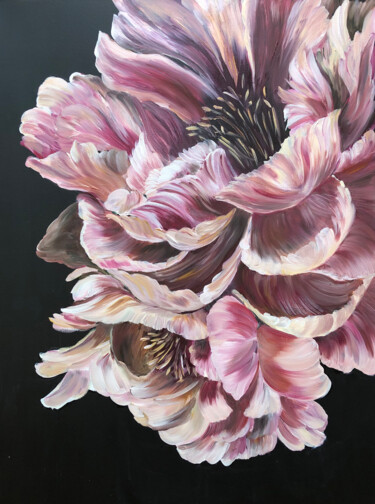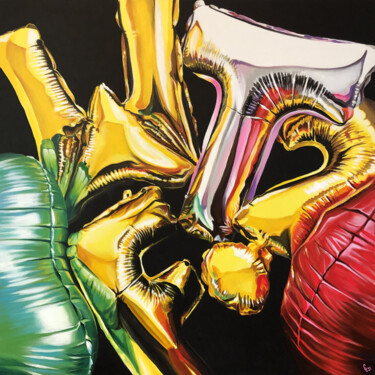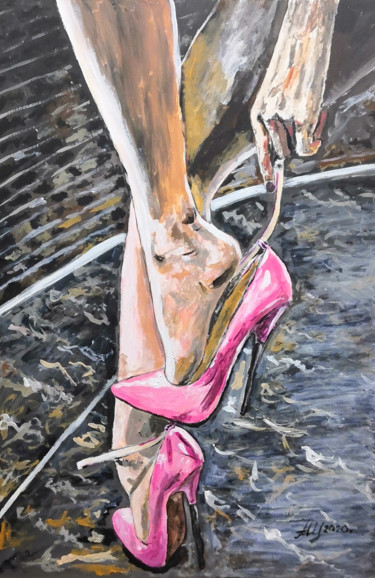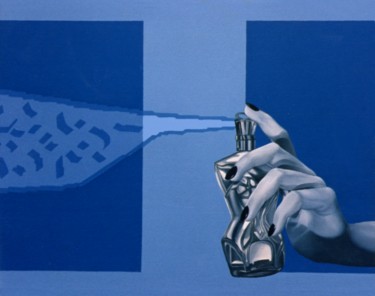 Marion Roy, Elles, 2021. Drawing, pencil/pastel on paper, 18 x 13 cm.
Marion Roy, Elles, 2021. Drawing, pencil/pastel on paper, 18 x 13 cm.
Acceptance of diversity: a long achievement
It is irrefutable: our society is literally obsessed with the size and shape of the human body, which are also considered, unjustifiably and superficially, a kind of mirror of personal identity. But has it always been so? The history of art, precisely through its various trends, teaches us that, even in the ages preceding our own, a certain canon of beauty was strongly pursued and sought after. For example, during prehistoric times, sculptures and works of art mainly portrayed curvy and shapely silhouettes, which, like the famous Venus of Willendorf, were meant to allude to female fertility. Later, in ancient Greece, the ideal woman was often immortalized with small breasts, placed inside an elongated body, such as the famous Venus of Milo. This anatomical model remained in vogue until the seventeenth and eighteenth centuries, as evidenced by the voluptuous women portrayed by Peter Paul Rubens. However, around this same period, and until the beginning of the nineteenth century, the use of skirts under structured gave rise to silhouettes and representations even more rounded, exemplified by the features of the protagonists of Las Meninas by Diego Velázquez. At the end of the nineteenth century, however, a new canon of beauty imposed itself, which followed the work of the American artist Charles Dana Ginson, who drew women who were still voluptuous, but taller and thinner. Subsequently, the artistic experimentation of the twentieth century gave rise to various types of female attractiveness, which are exemplified in the slender and flowing bodies of the women of Henri Matisse, in those plump and twisted of Pablo Picasso and in the soft forms of Fernando Botero.
 Tony Rubino, Venus de Milo study with colorful pattern painting, 2021. Acrylic / lithograph on canvas. 61 x 50.8 cm.
Tony Rubino, Venus de Milo study with colorful pattern painting, 2021. Acrylic / lithograph on canvas. 61 x 50.8 cm.
 Robin Austin, Marilyn Monroe - allure, 2014. Digital print on metal, 135 x 101.6 cm.
Robin Austin, Marilyn Monroe - allure, 2014. Digital print on metal, 135 x 101.6 cm.
However, in this same period, it was the fashion world and the media to impose their aesthetic canons, tending to promote, at first, younger, athletic and slender female figures, such as the "flappers" of the twenties. This trend was interrupted only in the fifties, when, with the spread of Pin up, shapely women came back in vogue, just like the iconic Marilyn Monroe, immortalized by Andy Warhol. Between the sixties and seventies, however, the standards of beauty returned to be very close to those of the twenties, resizing only around the end of the century, when the new supermodels, such as model Cindy Crawford, presented a healthier look, athletic and fit. In the nineties, however, the emphasis shifted again to thinness, which, exaggerated and mythicized, continued to be synonymous with beauty until the 2000s. Only since the beginning of the XXI century, a new orientation has taken over, which, more open, realistic and productive, aims at celebrating beauty in its most disparate diversity, freeing itself from sizes, colors and other useless and relative standards. In this sense, contemporary art has clearly expressed itself. With the work of artists such as Jenny Saville, Sally Hewett, Stella Maria Baer and Prudence Flint, it has wanted both to pay homage to the beauty of all women and to promote the value of uniqueness and simplicity, highlighting ordinary and accessible physical models.
 Yanis Salimov, Red queen, 2022. Oil / acrylic on canvas, 70 x 50 cm.
Yanis Salimov, Red queen, 2022. Oil / acrylic on canvas, 70 x 50 cm.
Contemporary art: the celebration of universal beauty
Artmajeur's artists have largely adhered to these new intentions embraced by much of contemporary art, sometimes even making explicit reference to the values of the "body positive" movement, which, by challenging society's canons and prejudices about bodies, aims to promote the acceptance of all human types regardless of size, ethnicity, gender or physical ability. Indeed, this ideology appears strongly in the works of Armen Manukyan-Burovtsov, Sviatlana Petushkova, Zhenya Grosh, Laurence Pustoc'H and Harrison Ebwele, whose intent is to highlight bodies, which have too often been censored or misrepresented by the Media.
 Armen Manukyan-Burovtsov (armmenart): She-predator, 2010. Digital photograph on paper, 80 x 75 cm.
Armen Manukyan-Burovtsov (armmenart): She-predator, 2010. Digital photograph on paper, 80 x 75 cm.
Armen Manukyan-Burovtsov (armmenart): She-predator
The work of Artmajeur artist, Armen Manukyan-Burovtsov, does not only depict a shapely woman in an ambiguous, provocative and sensual attitude. In fact, the artist, who clearly refers to the dirty atmospheres of photographer Jan Saudek, has created, as he himself declared, a real "predator of the "body positive"". But what does this statement allude to? Probably the photograph wants to refer to the birth of a new woman, a sort of amazon, ready to defend "until death" her diversity, aware of her uniqueness, her strength and strong ambiguous sensuality.
 Sviatlana Petushkova, Gerda / Vitiligo beauty, 2021. Painting, acrylic / lacquer / marker on canvas, 50 x 40 cm.
Sviatlana Petushkova, Gerda / Vitiligo beauty, 2021. Painting, acrylic / lacquer / marker on canvas, 50 x 40 cm.
Sviatlana Petushkova: Gerda / Vitiligo beauty
In the painting by Artmajeur's artist, Sviatlana Petushkova, a new type of beauty is highlighted, which, long censored and banned, has been valued, appreciated and normalized only in recent years. In fact, the subject of the work is a body, which, made unique and particular by the signs of vitiligo, becomes the symbol of a modern open-mindedness, bearer of new richness, variety and sensitivity. This exaltation of diversity is a recurring aspect in the artistic production of Sviatlana Petushkova, whose work has often explored the human body, interpreting it as the symbol of a new universal beauty, which passes through self-acceptance. Finally, reinforcing what has been said are the artist's own statements: "I hope my art will help many people to love themselves and accept their bodies."
 Zhenya Grosh, Where are the wings, 2018. Digital photograph on paper, 40 x 60 cm.
Zhenya Grosh, Where are the wings, 2018. Digital photograph on paper, 40 x 60 cm.
Zhenya Grosh: Where are the wings
The photography of Artmajeur's artist, Zhenya Grosh, provides us with an image of everyday reality, extremely intimate and hyper-realistic, which frames the most sensual parts of the female body, inexorably marked by some obvious imperfections. These seem to be a "cry", an explicit declaration, aimed at highlighting what we really are: imperfect beings. Probably behind this awareness hides a strong desire to be able to accept ourselves.
 Laurence Pustoc'H, Les demoiselles d’…., 2021. Oil on canvas, 100 x 100 cm.
Laurence Pustoc'H, Les demoiselles d’…., 2021. Oil on canvas, 100 x 100 cm.
Laurence Pustoc'H: Les demoiselles d’….
The artwork of Artmajeur's artist, Laurence Pustoc'H, is a contemporary and innovative "remake" of Pablo Picasso's Les Demoiselles d'Avignon, a masterpiece that already proposed a canon of beauty outside the box. In fact, in line with the Spanish master, Pustoc'H has painted female figures that are not very canonical, referring exclusively to his sensitivity and the objectives of his artistic investigation. In addition, from the explicit statements of the artist it emerges that: the portrayed bodies, marked by the brutality of life, consumed by too much love or violence, show themselves with pride, in order to express their desire for life.
 Harrison Ebwele: "Don't look at me", 2021. Painting, ballpoint pen on paper, 54 x 43 cm.
Harrison Ebwele: "Don't look at me", 2021. Painting, ballpoint pen on paper, 54 x 43 cm.
Harrison Ebwele: "Don't look at me"
The painting by Artmajeur artist, Harrison Ebwele, entitled "Don't look at me", is part of the collection "Self-esteem", which is a clear reference to the feeling of those who suffer, because, not having the courage to accept themselves, they tend to shy away from the gaze of others. These concepts are the result of an autobiographical experience, through which the artist has understood the importance of being at ease with oneself. Despite these strong and serious topics, the work is made extremely vital by the colors used and the graceful rounded shapes of the protagonist.


 Olimpia Gaia Martinelli
Olimpia Gaia Martinelli
